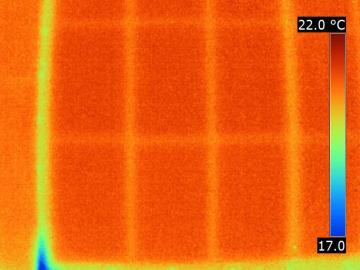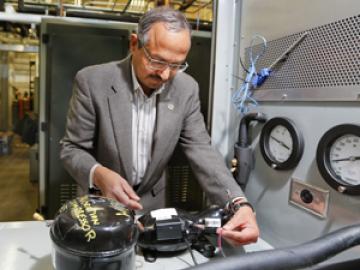Filter News
Area of Research
- (-) Building Technologies (4)
- (-) Fusion Energy (2)
- Advanced Manufacturing (5)
- Biological Systems (5)
- Biology and Environment (4)
- Biology and Soft Matter (1)
- Chemical and Engineering Materials (2)
- Chemistry and Physics at Interfaces (6)
- Clean Energy (89)
- Climate and Environmental Systems (2)
- Computational Biology (1)
- Computational Chemistry (1)
- Energy Frontier Research Centers (8)
- Fossil Energy (1)
- Fuel Cycle Science and Technology (1)
- Functional Materials for Energy (6)
- Geographic Information Science and Technology (2)
- Isotope Development and Production (1)
- Materials (91)
- Materials Synthesis from Atoms to Systems (5)
- Materials Under Extremes (6)
- National Security (2)
- Neutron Data Analysis and Visualization (2)
- Neutron Science (36)
- Nuclear Science and Technology (20)
- Nuclear Systems Modeling, Simulation and Validation (1)
- Quantum Condensed Matter (2)
- Reactor Technology (1)
- Sensors and Controls (2)
- Supercomputing (43)
- Transportation Systems (2)
News Type
Media Contacts

Vacuum insulation technology called modified atmosphere insulation, or MAI, could be a viable solution for improving the energy performance of buildings, based on a study by Oak Ridge National Laboratory and industry partners.

The construction industry may soon benefit from 3D printed molds to make concrete facades, promising lower cost and production time. Researchers at Oak Ridge National Laboratory are evaluating the performance of 3D printed molds used to precast concrete facades in a 42-story buildin...


A research demonstration unveiled today at the Department of Energy’s Oak Ridge National Laboratory combines clean energy technologies into a 3D-printed building and vehicle to showcase a new approach to energy use, storage and consumption. The Additive Manufactur...

When it’s up and running, the ITER fusion reactor will be very big and very hot, with more than 800 cubic meters of hydrogen plasma reaching 170 million degrees centigrade. The systems that fuel and control it, on the other hand, will be small and very cold. Pellets of frozen gas will be shot int...

The Department of Energy’s Oak Ridge National Laboratory and Whirlpool Corporation are collaborating to design a refrigerator that could cut energy use by up to 40 percent compared with current models




